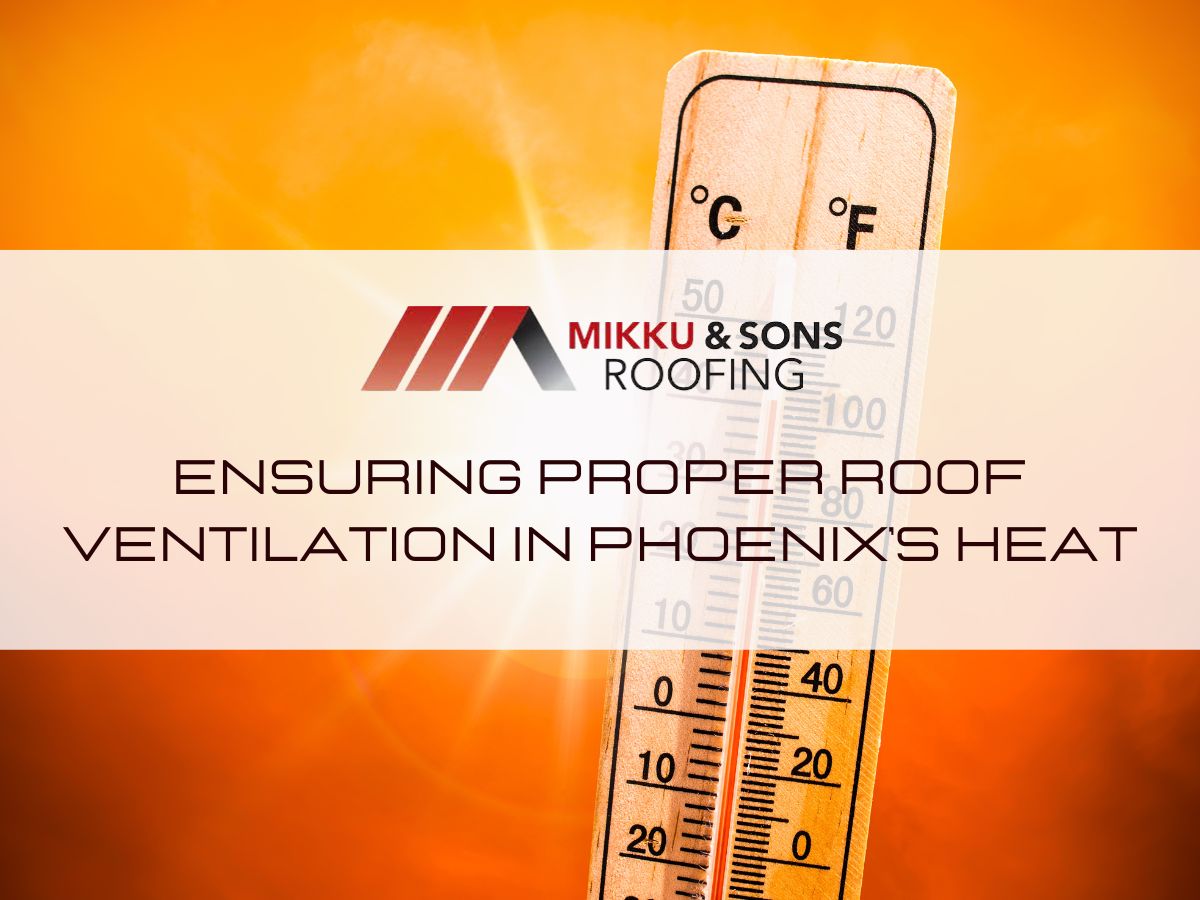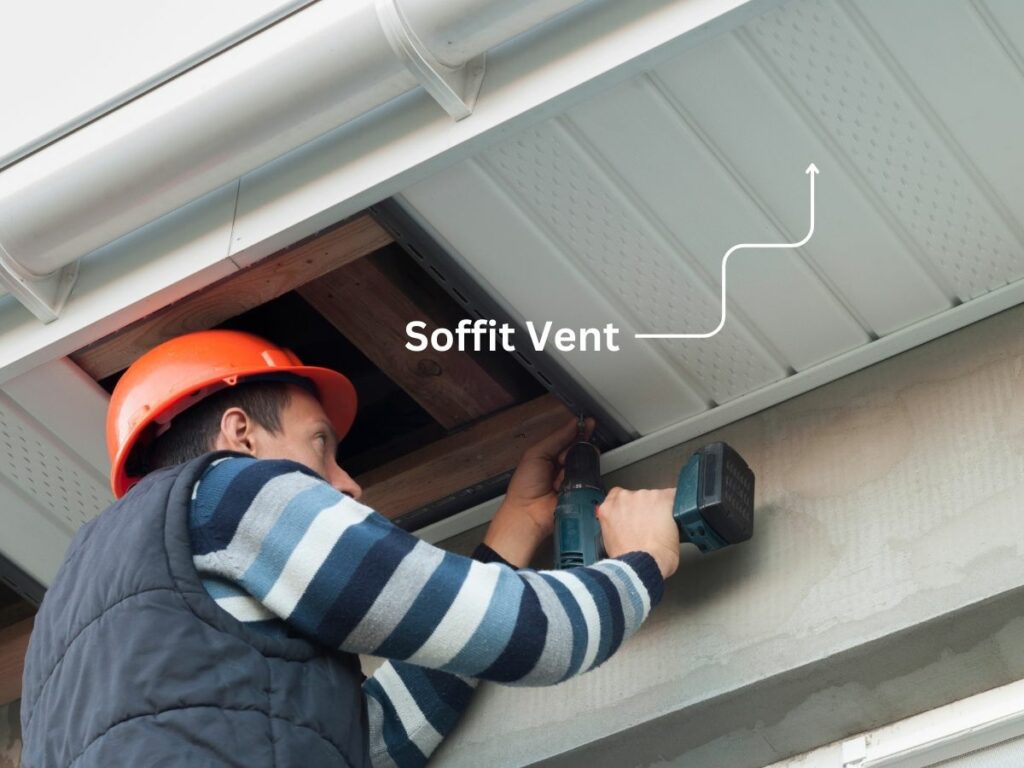

Living in Phoenix, where the sun blazes down relentlessly, ensuring proper roof ventilation is not just a matter of comfort, but a necessity. The extreme heat can take a toll on your home, particularly the roof.
In this blog, we will explore the significance of proper roof ventilation in such a scorching climate. From reducing energy costs to prolonging the life of your roof, we'll cover the techniques and benefits of effective ventilation strategies tailored for Phoenix's unique weather challenges.
Get ready to learn how to keep your home cool and protected, even as the mercury soars!
Phoenix, Arizona, known for its scorching summers and arid environment, presents unique challenges for maintaining comfortable indoor temperatures and preserving the integrity of buildings. The extreme temperatures and low humidity levels significantly impact the ventilation requirements for roofs in this desert city.
According to WeatherSpark, Phoenix experiences some of the hottest temperatures in the United States, with summer highs regularly surpassing 100°F (37.8°C) for months on end. These extreme temperatures exert immense heat stress on buildings, including their roofs.
Without proper ventilation, the trapped heat in the attic can radiate downward, increasing the indoor temperature and putting additional strain on air conditioning systems.
The low humidity characteristic of Phoenix exacerbates the effects of high temperatures. With less moisture in the air, sweat evaporates quickly, making it feel even hotter than it actually is.
Additionally, low humidity levels can contribute to the buildup of static electricity and accelerate the drying out of building materials, including roofing materials. Proper ventilation becomes crucial in preventing moisture-related issues and maintaining structural integrity.
Given the extreme temperatures and low humidity levels in Phoenix, effective roof ventilation is essential for dissipating heat buildup and maintaining a comfortable indoor environment. Without adequate ventilation, heat can accumulate in the attic space, leading to various problems such as:
To address these challenges, it's imperative to implement proper roof ventilation systems tailored to Phoenix's climate. This includes a balanced combination of intake and exhaust vents strategically placed to facilitate the flow of air and remove excess heat and moisture from the attic space.



Below are some of the Ventilation Solutions for Phoenix
Living in a hot climate like Phoenix, Arizona, comes with its unique set of challenges, especially when it comes to maintaining comfortable indoor temperatures and preserving the integrity of buildings.
One of the key strategies to combat the heat and ensure the longevity of your home is through proper roof and attic ventilation

In hot climates, without ventilation, rooftops absorb heat, turning attics into furnaces. Proper ventilation expels hot air, drawing in cooler air, reducing temperature differences between the attic and living areas below.
Here are some benefits:
High temperatures and low humidity can cause moisture buildup in attics, leading to mold and structural damage. Proper ventilation expels excess moisture, maintaining optimal humidity levels and preventing issues like mold growth and rot.
Here are some benefits:
Proper roof and attic ventilation help homeowners in hot climates cut air conditioning reliance, leading to significant energy savings. Well-ventilated attics stabilize indoor temperatures, reducing AC usage frequency and extending HVAC lifespan.
Here are some benefits:
When it comes to building codes and regulations, ensuring proper roof ventilation is not just a matter of comfort and efficiency but also a legal requirement. In Phoenix, Arizona, where the scorching desert heat poses unique challenges, understanding and meeting specific ventilation requirements are crucial for homeowners and builders alike.
Phoenix follows the International Residential Code (IRC) and the International Building Code (IBC), which outline the minimum ventilation requirements for residential and commercial buildings, respectively.
According to these codes, the minimum net free ventilating area (NFVA) for attic ventilation is typically calculated based on the size of the attic space. For example, the IRC recommends a minimum of 1 square foot of NFVA for every 150 square feet of attic space.
Example Calculation:
It's important to note that these are general guidelines, and specific requirements may vary based on factors such as roof pitch, insulation levels, and climate zone.
Achieving proper ventilation involves not only meeting the minimum NFVA requirements but also ensuring a balanced distribution of intake and exhaust vents. Intake vents, such as soffit vents or eave vents, allow fresh air to enter the attic, while exhaust vents, like ridge vents or gable vents, facilitate the expulsion of hot air.
For effective ventilation, the total NFVA of intake vents should be approximately equal to the total NFVA of exhaust vents.
Certain property types, such as multifamily dwellings, may have specific ventilation requirements beyond those outlined in the IRC or IBC. For example, townhouses or condominiums with shared attic spaces may necessitate coordination among multiple units to ensure adequate ventilation.
Additionally, commercial buildings, such as warehouses or office complexes, may have larger attic spaces requiring proportionally greater ventilation capacity.
In addition to adhering to building codes and regulations, it's essential to follow the manufacturer's guidelines for the installation and use of ventilation products. Manufacturers often provide specific instructions regarding the placement, spacing, and installation methods for vents to maximize their effectiveness and longevity.
In a city like Phoenix, where the sun beats down relentlessly and temperatures soar, traditional ventilation methods may not always suffice to keep homes cool and comfortable.
Fortunately, advancements in technology have paved the way for innovative ventilation solutions tailored to the unique challenges of this desert environment.
In the harsh desert climate of Phoenix, Arizona, where temperatures soar and the sun beats down relentlessly, proper maintenance and inspection of roof ventilation systems are essential to ensure optimal performance and longevity.
Neglecting these critical components can lead to a host of problems, including heat buildup, moisture-related issues, and reduced energy efficiency. To help homeowners navigate the challenges of maintaining effective roof ventilation systems in Phoenix, here are some guidance on regular maintenance and inspection practices.

Phoenix's desert environment means that debris such as leaves, dust, and even small branches can accumulate on roofs and block ventilation openings.
Regularly clearing away debris from intake vents, exhaust vents, and the roof surface helps ensure unimpeded airflow and prevents obstructions that can hinder ventilation performance.
ns of the roof and ventilation components to check for signs of damage or deterioration. Look for cracks, gaps, or missing pieces in vent covers, flashing, and seals. Any damage should be promptly repaired to prevent moisture infiltration and maintain the integrity of the ventilation system.
Insects, rodents, and birds can sometimes make their way into attic spaces through ventilation openings, causing damage and compromising ventilation efficiency. Inspect vents for signs of pest activity, such as nests, droppings, or chewed materials, and take appropriate measures to address any infestations promptly.
Periodically assess the airflow in the attic to ensure that ventilation systems are functioning as intended. Place a hand near vents to feel for airflow, or use smoke pencils or thermal imaging cameras to visualize airflow patterns. If airflow seems weak or inconsistent, it may indicate a blockage or malfunction that requires attention.
Proper insulation is essential for optimizing the performance of roof ventilation systems and preventing heat transfer between the attic and living spaces. Inspect insulation for signs of damage, compression, or displacement, and repair or replace as needed to maintain its effectiveness. Ensure that insulation does not block airflow from intake vents or impede the operation of exhaust vents.
While homeowners can perform many maintenance tasks themselves, it's also advisable to schedule periodic inspections by qualified professionals. Professional inspectors can conduct comprehensive assessments of the entire roofing and ventilation system, identify any issues or potential problems, and recommend appropriate solutions or repairs.
Over time, advancements in ventilation technology may offer opportunities to upgrade or enhance existing systems for improved performance and efficiency. Consider options such as installing solar-powered vents, upgrading to high-efficiency exhaust fans, or adding additional ventilation openings to better suit the specific needs of your home and climate conditions.
Proper roof and attic ventilation are indispensable in mitigating the challenges posed by Phoenix's scorching climate. From reducing energy costs and preserving roofing materials to maintaining indoor comfort and preventing moisture-related issues, effective ventilation strategies play a crucial role in ensuring the longevity and efficiency of homes in this arid environment.
By understanding the unique ventilation requirements, implementing suitable solutions, and adhering to maintenance practices, homeowners can optimize their ventilation systems to withstand the relentless heat and safeguard their properties for years to come.
